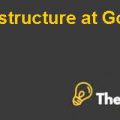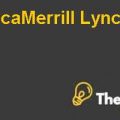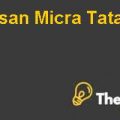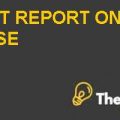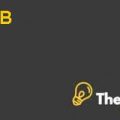| 3 | |||||
| FCFE | Year + 1 | Year + 2 | Year + 3 | Year + 4 | Year + 5 |
| Net Income | $ 33,194.00 | $ 56,514.00 | $ 77,513.00 | $ 99,772.00 | $ 123,370.00 |
| Net Capex | $ - | $ - | $ - | $ - | $ - |
| Change in Working Capital | $ 8,639.00 | $ 29,035.00 | $ 46,818.00 | $ 65,545.00 | $ 85,253.00 |
| Change in Net Debt | -$ 29,471.00 | -$ 32,396.00 | -$ 35,611.00 | -$ 39,145.00 | -$ 43,031.00 |
| FCF for common equity stakeholders | $ 12,362.00 | $ 53,153.00 | $ 88,720.00 | $ 126,172.00 | $ 165,592.00 |
| Discounted Factor | 1.1217 | 1.2582 | 1.4114 | 1.5831 | 1.7758 |
| Discounted FCFE | $ 11,020.72 | $ 42,244.54 | $ 62,861.65 | $ 79,698.23 | $ 93,249.48 |
| Terminal Value | $ 1,660,726.13 | ||||
| Discount Factor | 1.7758 | ||||
| Discounted Terminal Value | $ 935,201.31 | ||||
| Total Value | $ 1,224,275.93 | ||||
| FCFF | Year + 1 | Year + 2 | Year + 3 | Year + 4 | Year + 5 |
| Cash Flow from Operations | $ 107,018.00 | $ 132,395.00 | $ 68,173.00 | $ 89,718.00 | $ 112,569.00 |
| Net Capex | $ - | $ - | $ - | $ - | $ - |
| Interest Expense * (1-tax rate) | $ 28,079.73 | $ 26,178.45 | $ 24,088.68 | $ 21,790.90 | $ 19,265.61 |
| FCF for the firm | $ 135,097.73 | $ 158,573.45 | $ 92,261.68 | $ 111,508.90 | $ 131,834.61 |
| Discounted Factor | 1.0709 | 1.1467 | 1.2280 | 1.3150 | 1.4082 |
| Discounted FCFE | $ 126,157.69 | $ 138,280.79 | $ 75,130.86 | $ 84,795.39 | $ 93,617.67 |
| Terminal Value | $ 2,643,742.02 | ||||
| Discount Factor | 1.4082 | ||||
| Discounted Terminal Value | $ 1,877,359.62 | ||||
| Value of Cash Flows | $ 2,395,342.02 | ||||
| Total Debt | $ 468,000.00 | ||||
| Total Value of Equity | $ 1,927,342.02 |
4). Market multiples Valuation
The valuation of the company based on three different market multiples is as follows:
| Market Multiples | |
| Enterprise Value/EBITDA | 11.01 |
| EBITDA Year +5 | $224,354 |
| Enterprise Value | $2,470,138 |
| Discount Factor | 1.7758 |
| Enterprise Value after discount | $1,391,003.49 |
| Forward Price/Earnings | 13.9 |
| Earnings Year +5 | $123,370 |
| Price of Company | $1,714,843 |
| Discount Factor | 1.7758 |
| Enterprise Value after discount | $965,676.03 |
| Price/Sales | 3.43 |
| Sales Year +5 | $2,401,840 |
| Price of Company | $8,238,311.20 |
| Discount Factor | 1.7758 |
| Enterprise Value after discount | $4,639,223.31 |
Business Analysis & Valuation Harvard Case Solution & Analysis
The valuation based on price over sales ratio is high but the valuation based on P/E ratio is low. This shows low investor confidence in the future growth prospects of the company. Similarly, the EV based on EBITDA multiple is also low as compared to the current market price of the company.
5). Pros and Cons of Valuation Methods
The pros and cons of all the valuation methods are as follows:
DDM:The pros of this model are that is an easy and most commonly used model of share price valuation and it values the stock without considering any market conditions. It is also easier for making the comparisons across companies in different industries. The disadvantages of this model is that DDM does not takes account of other important factors which include the brand loyalty of the customers, the intangible assets owned by the company or the customers that are retained by the business. All of these assets and intangible assets increase the value of the company. Secondly, the model also assumes that the growth rate of the dividend would remain consistent and stable for the foreseeable future.
DCF: The advantages of this model are many such as it takes time value of money into account and as this model relies on free cash flows therefore, it eliminates the subjectivity associated with the subjective accounting policies. The non-economic factors and short-term market conditions do not affect the valuation of this model. The disadvantage of this model is that it is highly sensitive to the assumptions of the inputs used in model. It is time intensive as compared to other methods. It also involves future forecasting which a complex task is especially if the company is not moving with 100% transparency.
RIM: The advantages of the residual income model are that the residual income would increase when the investment earns above the cost of capital and all the investment earnings below the cost of capital are eliminated. This model is also flexible as different cost of capitals can be applied to different investments with different levels of risk. The disadvantage of this model is that it does not relate the income of the company to the size and it does not facilitate the comparison across different companies.
Market Multiples: The advantages of using market multiples are that they are easier to understand and apply. Fewer assumptions are used in this valuation as compared to DCF and RIM. It also captures the current mood of the market in a better way. The disadvantages of this model are that the choice of the multiples can be subjective at times and it is difficult to find the comparables with similar revenue drivers and characteristics.
6). Better Valuation
Based on the valuations performed and the pros and cons of each method, we conclude that the DCF method based on FCFF and FCFE is the most accurate method, which provides us with a realistic value of HES. Although the intrinsic value calculated under this model is, lower as compared to the current market price of HES but it might be due to other factors in the market. In addition, since a number of assumptions seems to be accurate and this model takes into account the time value of money and the business and financial risks of HES, therefore, it provides us with more realistic value of HES.
This is just a sample partial case solution. Please place the order on the website to order your own originally done case solution.


